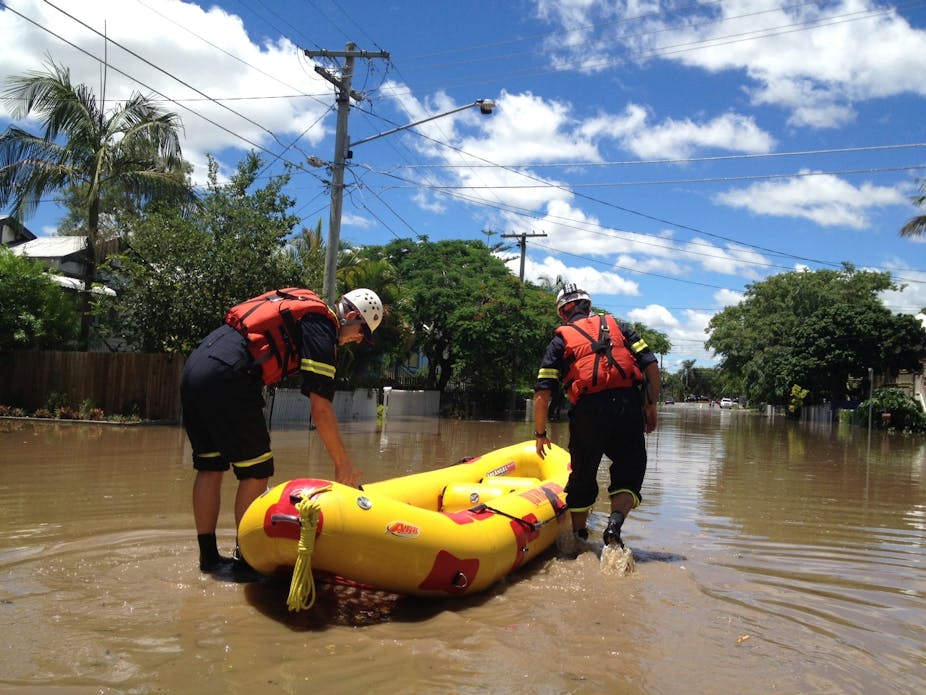Disasters are a fact of life. We need to talk about them.
Floods, fires, earthquakes and other misadventures will happen in spite of our best plans. Their impact will sometimes be severe simply because we chose to locate our factories, offices, schools and homes in disaster-prone locations. A bush setting means that your home in the hills is a probable casualty in a bushfire. Building on landfill in Newcastle (or in Wellington and San Francisco) means greater risk when the earthquake inevitably arrives. Living close to the city in Brisbane and other riverside locations involves exposure to flooding.
Some risks will get worse with global warming. Others won’t. If we choose not to mitigate injury through investment in resilient infrastructure and a hard-headed approach to zoning, we need to think about disaster recovery.
The Greens this week have mooted the idea of a national disaster fund, a permanent pool of money to assist recovery. The fund would replace one-off national and state government disaster levies. It would apparently assist householders and local government to get back on their feet. The proposal is vague: politicians are less likely to be criticised if they talk in generalities and don’t offer specifics that can be costed or questioned. Overall, however, the idea of a special fund is one that should be (and in the past sensibly has been) resisted.
One reason is that a giant pool of money – the fund is going to have to be big in order to be meaningful – will be an almost irresistible temptation for politicians. Those decision-makers, and the bureaucrats with a stake in distributing disaster funding, are unlikely to let money just sit there. They’ll want to spend it.
In order to be taken seriously, the fund’s proponents need to provide an indication of how the money would be quarantined. Would it be invested in the market, as with the Future Fund? Invested on an “ethical” and suitably green basis? (No shares in coal or other industries that exacerbate climate change and thus get blamed for floods or other tribulations?) Managed by an independent board reporting direct to Parliament, and with the sort of transparency we see in management of Norway’s sovereign wealth fund? Or just parked in a special Treasury account, controlled by poll-watching majority and minority governments?
How would money be disbursed? Would the government of the day use the fund as a disaster ATM, being wary about accumulation and keen to satisfy the voters by spending on every disaster … or just disasters that are politically strategic? Would money simply be handed to the states in a block, or dribbled out through the existing grant system? Would disbursement be restricted to mopping up or include measures to sustain small business in the years after the disaster, when the TV crews have gone away but the bills just keep coming in?
Another reason for wariness is that purpose-specific funds are problematic. Will we see Ministers saying “Sorry, you’ve had your quota of money for the year?” Fights over supplementary funding or topping-up of the fund? Questions about moral hazard?
Disaster relief is only one “good cause”. Are we going to have a discrete fund for “fixing” Indigenous education, one for dental health, one for regional arts, one for funding class litigation over breast and hip implants (manmade disasters that have a greater impact on lives than sodden carpet or charred DVDs, and are partly attributable to the TGA’s failure)?
Would the fund be restricted to post-disaster Band-aids? Would it instead include disaster mitigation through measures such as buyouts and closure of inefficient coal-fired power stations? Spending on mass afforestation as carbon sinks? Funding to buy out householders from flood-prone areas, so that when the next flood arrives there are fewer houses and businesses to be damaged? Funding mundane planning measures that are more effective than election-year media opportunities such as the christening of dams and bushfire tankers?
One of the luxuries of being a protest party is that you don’t need to provide detailed coherent proposals, and - sadly - often don’t have the capacity to do so. Rather than simply advocating a special fund, it would be good to see a proposal for a serious multi-year review of Australia’s disaster resilience, including scope for streamlining access to financial support and encouragement of mitigation rather than relief.
The proposed fund is interesting, but it answers the wrong question. Given that disasters recur, irrespective of global warming, we need to think about minimisation and make some hard choices. Those choices should not be determined by the insurance industry, which is starting to dissuade people from locating themselves in areas of climate vulnerability.
The time for national discussion about disasters has arrived. Don’t put it off till the next rainy day.

